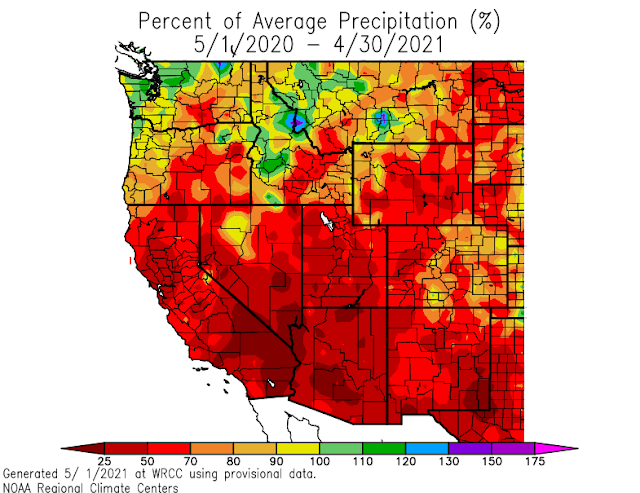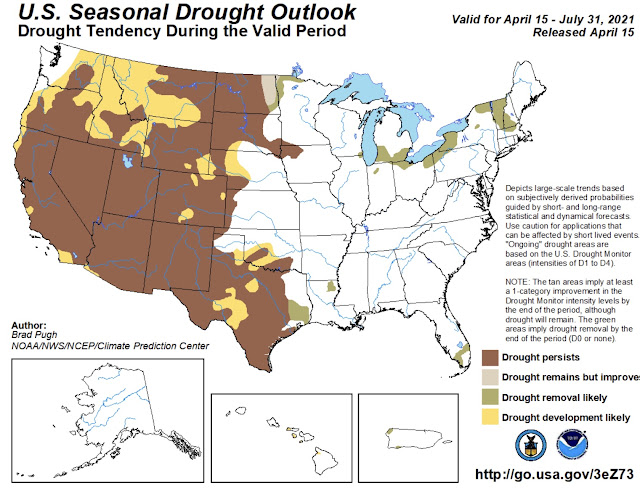This post is Part 1 of a three post series about the Western US Drought. Stay tuned for upcoming Parts 2 & 3.
For the past few years, most of Western United States has been gripped by a major drought. The areas hit hardest have been California and the Desert Southwest. This blog series will attempt to bring an understanding of the drought situation & impacts to the readers of this blog.
Let’s start with the US Drought Monitor, a drought outlook released every couple days. This outlook is valid as of Thursday (4/29).
The outlook’s categories are in the bottom right corner, ranging from “none” to “exceptional drought.” The most alarming fact right now is the amount of area labeled as severe, extreme, and exceptional drought.
Huge areas of the US are in some kind of drought, even Western Washington, where our dry April landed us in the "abnormally dry" category. But the situation is far worse across parts of Oregon, California, Utah, Colorado, Arizona, New Mexico, and Texas.
The grim situation is easily shown in the graphic below, which shows the percent of average precipitation in the past year.
The color key showing the percent of average rainfall is on the bottom of the map. A large area of the Southwest has received under 25% to around 70% of average rainfall. Rainfall in these areas is low to begin with, so having less than average is much worse in the Southwest than in the marine climate of Western Washington. (Picture average rainfall of 3-5 inches, then getting 25-50% of that rainfall...it’s not a good situation.)
Snowpack on May 1st ranges from nearly 150% of normal in the Washington Cascades to under 50% of normal in the Great Basin, Sierra Nevada, and Southern Rockies.
In short...this means that major drought conditions will continue this summer. That can be seen in the Seasonal Drought Outlook below. Pay attention to the brown and yellow shaded areas. Brown means drought persists, and yellow means drought develops.
This outlook is valid through July 31. Drought will likely persist across the entire Western United States with the exception of NW Oregon and Western Washington (next time you water your lawn...remember how fortunate you are that you have the water supply to do so).






No comments:
Post a Comment